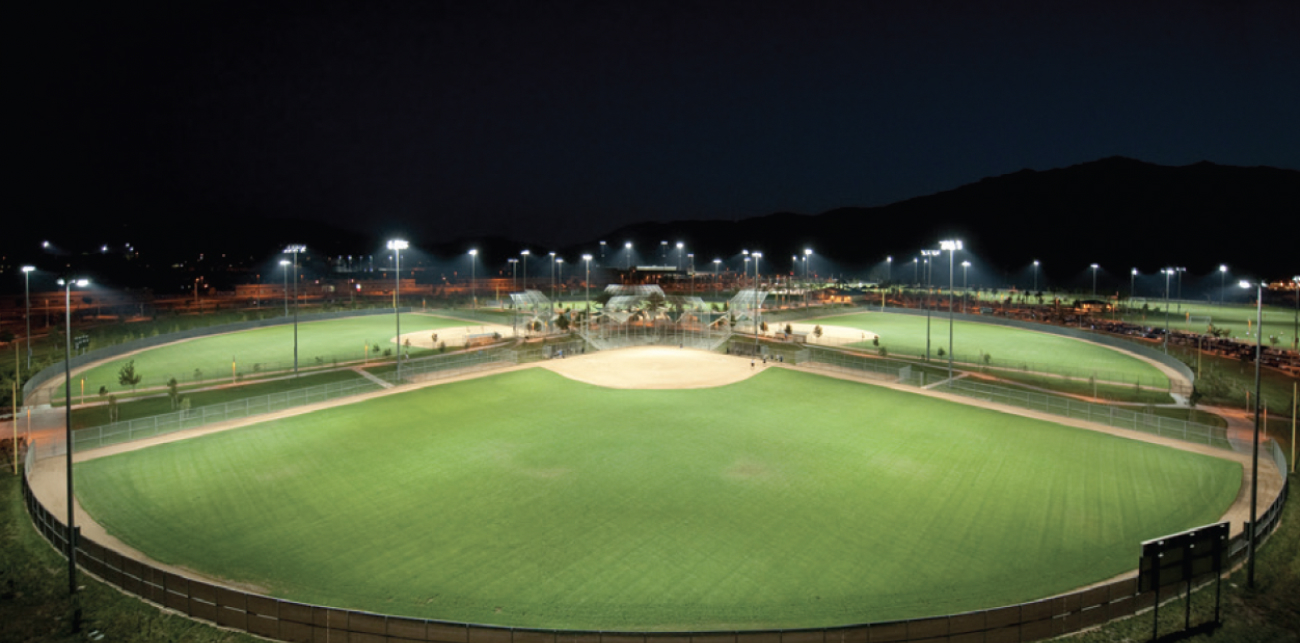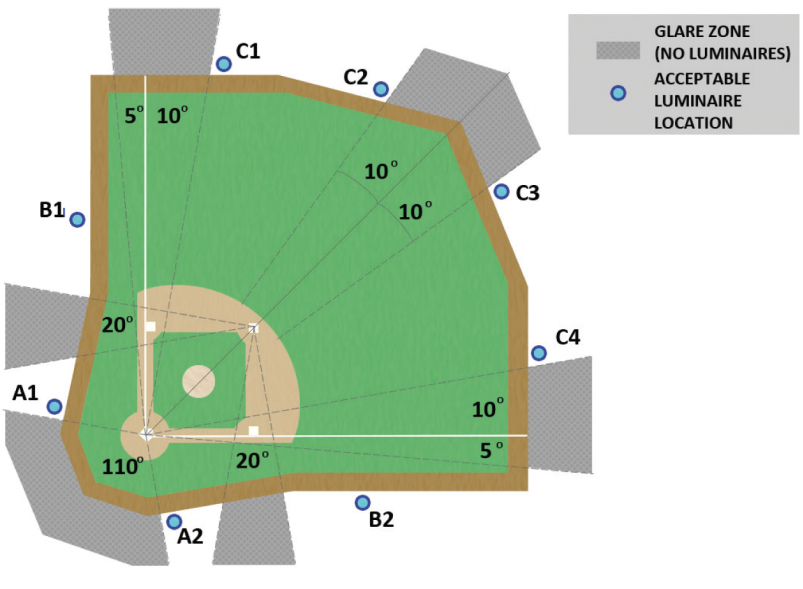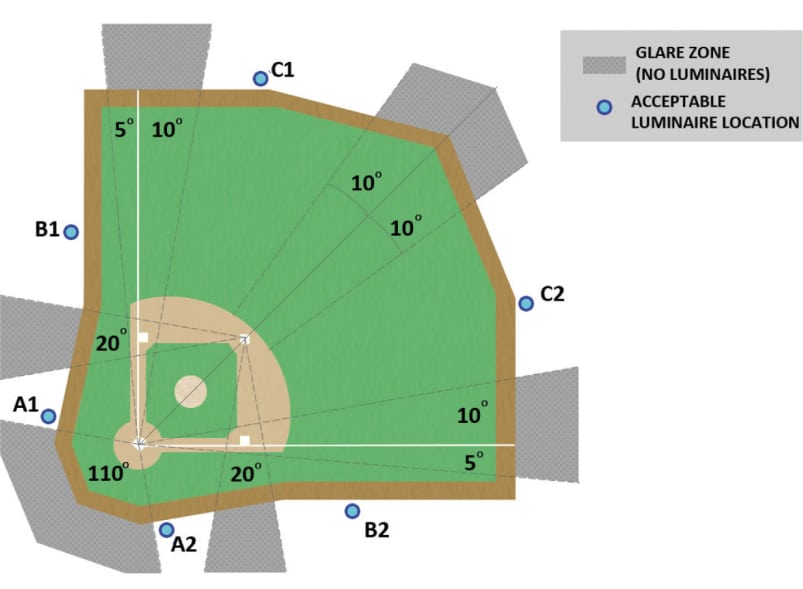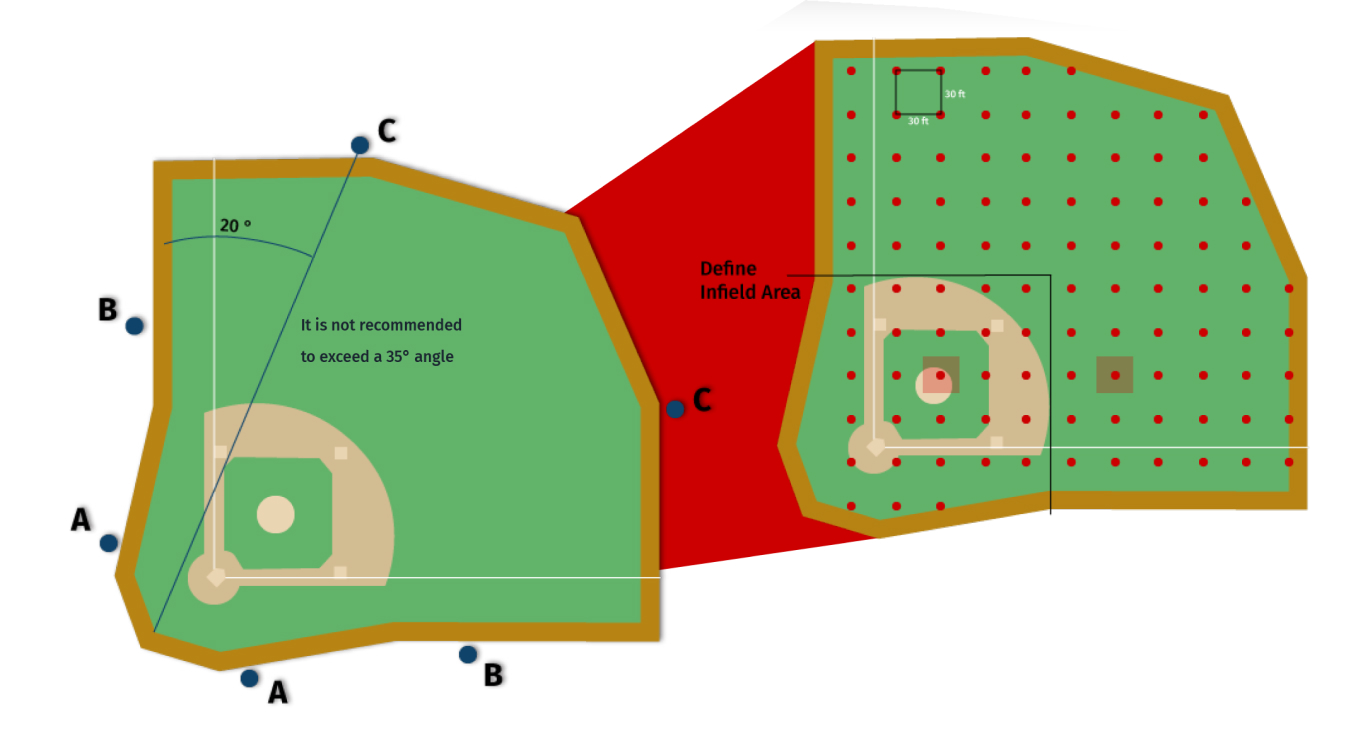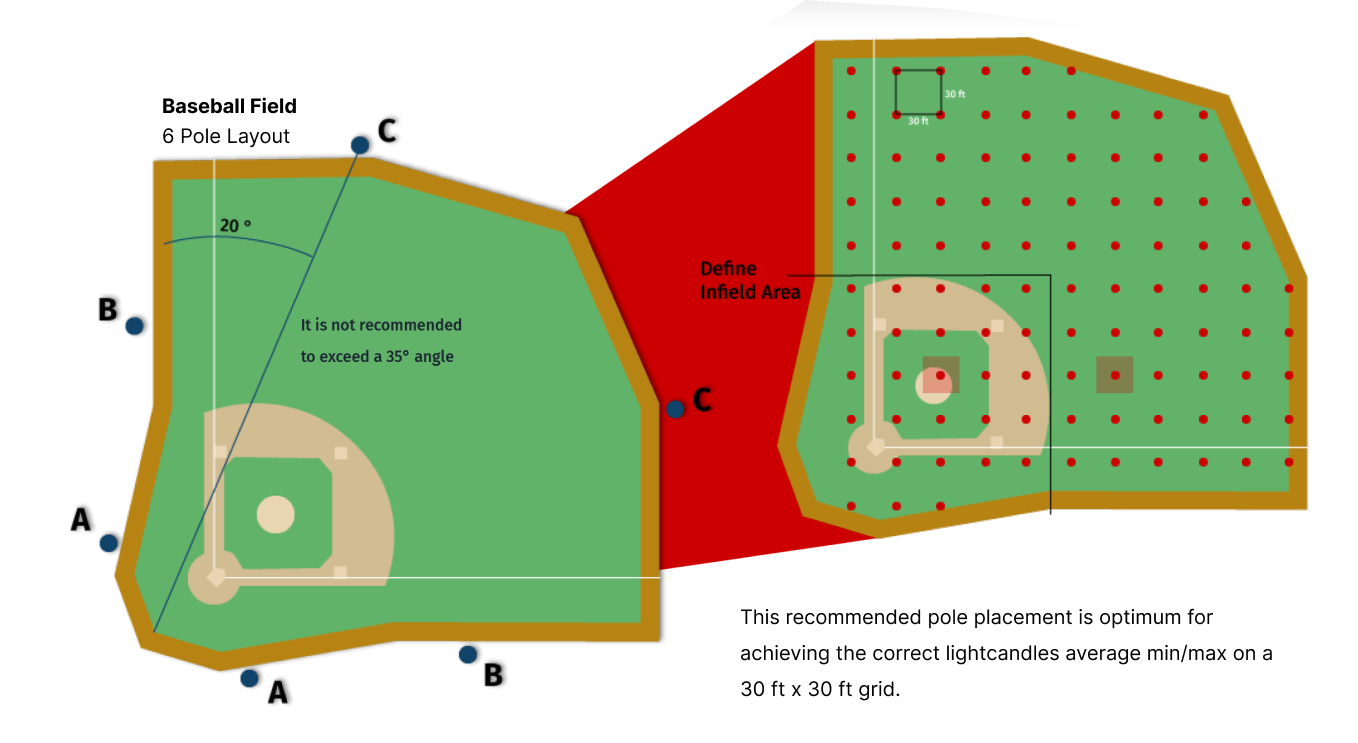Sports Lighting Footcandle Standards for Baseball ⚾
The purpose of the following sports lighting footcandle standards is to provide the reader with recommendations to aid in the design of sports lighting systems. The goal of lighting for sports is to provide an appropriate luminous environment that contributes to the visibility of the playing target (ball), the competitors and the surrounding backgrounds. The popular sport of baseball is covered in the following.
Class I
Baseball Class I Footcandle Standards
Class I of competitive play is any competition that is played before a group of 5,000 or more spectators. Lighting criteria for major stadiums and arenas require special design considerations such as vertical and horizontal illuminance values not covered by this practice, which may be defined by individual sports governing bodies and/or broadcasting organizations.
Recommended Horizontal illuminance:
Infield: 150 fc. CV = 0.07 or less. (Emax/Emin = 1.2:1 or less)
Outfield: 100 fc. CV = 0.13 or less. (Emax/Emin= 1.7:1 or less)
Class II
Baseball Class II Footcandle Standards
Class II of competitive play is any competition that is played before a group of up to 5,000 spectators. Lighting criteria for major stadiums and arenas require special design considerations such as vertical and horizontal illuminance values not covered by this practice, which may be defined by individual sports governing bodies and/or broadcasting organizations.
Recommended Horizontal illuminance:
Infield: Infield: 100 fc. CV = 0.10 or less. (Emax/Emin= 1.5:1 or less)
Outfield: 70 fc. CV = 0.17 or less. (Emax/Emin= 2:1 or less)
Class III
Baseball Class III Footcandle Standards
Class III of competitive play is any competition that is played before a group of up to 2,000 spectators. Lighting criteria for major stadiums and arenas require special design considerations such as vertical and horizontal illuminance values not covered by this practice, which may be defined by individual sports governing bodies and/or broadcasting organizations.
Recommended Horizontal illuminance:
Infield: 50 fc. CV = 0.17 or less. (Emax/Emin= 2.0:1 or less)
Outfield: 30 fc. CV = 0.21 or less. (Emax/Emin = 2.5:1 or less)
Class IV
Baseball Class IV Footcandle Standards
Class IV of competitive or recreational play only, with limited or no provision for spectators. Class IV lighting levels are suitable for play at fields that do not draw a large number of spectators. Many fields that host competitive play for adult recreational leagues will have very few spectators. Games for youth leagues will typically only be attended by family members of the participants.
Recommended Horizontal illuminance:
Infield: 30 fc. CV = 0.21 or less. (Emax/Emin = 2.5:1 or less)
Outfield: 20 fc. CV = 0.25 or less. (Emax/Emin = 3:1 or less)
Download all Baseball Class Standards
Explore why proper lighting is important in baseball
BASEBALL FIELD LIGHTING
Why is proper lighting important in baseball?
Proper lighting is crucial in baseball due to the sport’s high-speed, multi-directional nature. With baseballs traveling at speeds exceeding 61 meters per second (200 feet per second), adequate illuminance levels and appropriate light direction are essential. The ball can be temporarily lost from sight when in flight, often due to glare from light sources or a low-contrast background. Therefore, ensuring the correct placement of lighting poles and precise aiming of floodlights is vital to ensure optimal visibility for both players and spectators.
Full Service Sports Lighting Installation
DIMENSIONS AND OCCUPIED AREAS
Infield and Outfield Dimensions and Occupied Areas
To create a comprehensive lighting design for baseball fields, it’s important to consider various aspects of the field’s dimensions and occupied areas. Here’s a summary of the key points:
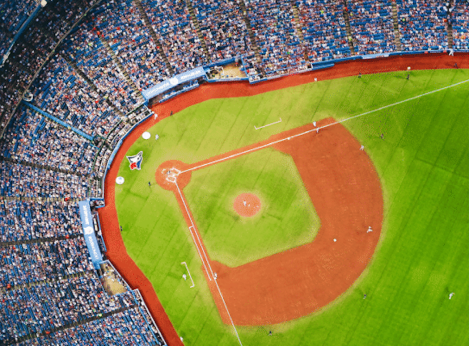
- Infield and Outfield Dimensions:
Baseball infield dimensions are typically standard, while outfield dimensions can vary in terms of distance and area.
- Foul Zone Strip:
The foul zone strip is considered part of the playing area and should be included in the lighting design to ensure consistent illumination.
- Distance to Seating Area:
Major and minor league baseball fields extend the distance from home plate to the seating area, which should be factored into the lighting plan.
- Narrowing Foul Zone:
It’s important to note that the foul zone may gradually narrow as it extends toward the outfield, impacting the lighting requirements.
- Occupied Areas:
Various occupied areas, such as bullpens, dugouts, and warm-up areas, are often included in the desired illuminated area to ensure the safety and visibility of players and staff.
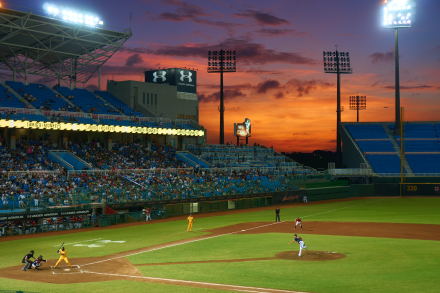
Consideration of these factors is essential for creating an effective and comprehensive lighting design that meets the specific needs of a baseball field.
Need Help With Your Sports Lighting?
National LED can be your go-to sports lighting company for field layouts and turnkey installations.
PROPER LIGHTING
Minimizing Shadows and Ensuring Optimal Visibility for Players
Proper baseball field lighting should prioritize minimizing shadows, providing good modeling for players, and reducing glare through strategic pole placement and luminaire positioning, as illustrated in Figure 1.
- Pole Location for Visibility
To enhance visibility and minimize glare for players, pole locations should be carefully chosen. Figure 1 – 8 Pole Layout provides an illustration of the ideal pole placement.
- Minimizing Shadows
Lighting design should aim to minimize shadows on the field to provide good modeling for the players. This typically involves lighting from three or four different directions to achieve even illumination.
- Strategic Luminaire Placement
The placement of luminaires should align with the way the game is played to ensure players have adequate visibility. Figure 1 – 8 Pole Layout offers common locations for the “A,” “B,” and “C” poles.
- Glare Reduction
To reduce glare and its impact on the game, it’s essential to avoid placing poles within the glare zones indicated on the pole layout figures provided.
LUMINAIRES
Arrangement of when luminaires are arranged in banks
When arranging luminaires in banks (groups of lights within a fixture), it’s important to avoid aiming interferences between them. Instead, individual luminaires within the banks should be positioned to align with their respective aiming points on the field. This arrangement typically involves starting with the leftmost luminaire at the far left with a more severe angle and progressing towards the right with less severe angles for optimal lighting distribution.
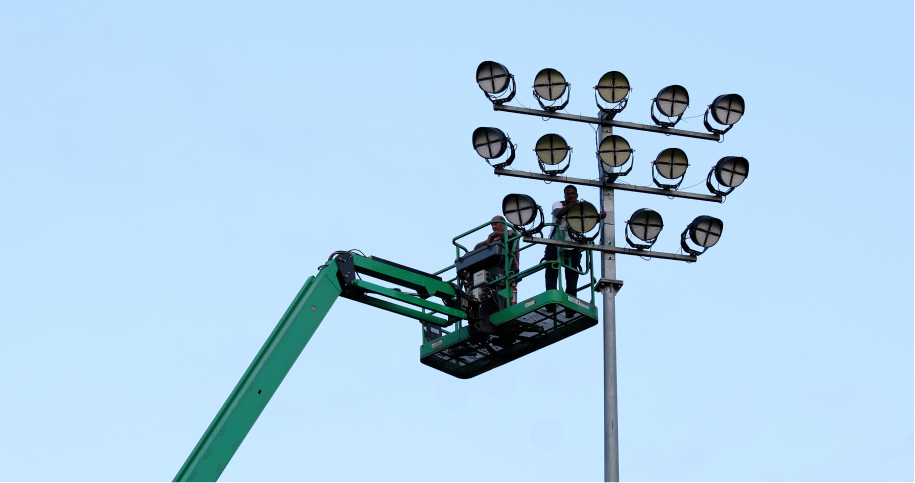
Beam spread of each luminiaire
When selecting the beam spread for each luminaire, the goal is to maximize field illumination without creating hot spots. This involves choosing a beam width that allows for overlap with adjacent aiming points.
Prevent hot spots
To prevent hot spots, it’s advisable that the maximum beam candlepower of a single luminaire should not exceed 80 percent of the average illuminance level at any given point on the field. This approach helps ensure even and consistent lighting across the playing area.
MOUNTING HEIGHTS
Recommended luminaire mounting heights
- Minimum Height:
For regulation baseball fields with 90-foot base paths, the minimum recommended luminaire mounting height should be approximately 21 meters (70 feet).
- Height Adjustment:
Mounting heights should be increased as needed to accommodate additional rows of luminaires, especially when higher light levels are required.
- Beam Angle:
To prevent excessive glare, it’s advisable to raise mounting heights to ensure that the top portion of the defined light beam is 10 degrees or more below the luminaire’s placement.
- A Poles Height:
A rule of thumb for the height of A poles is to take the sum of the setback (distance from home plate to the poles) and the baseline (distance from first to third base), and divide it by 2.
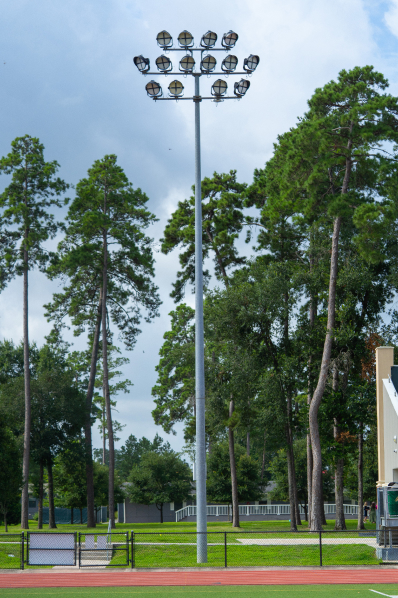
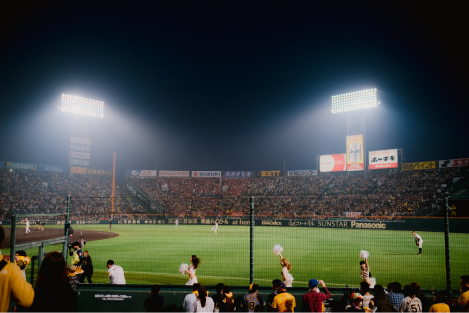
- B Poles Height:
For B poles, measure a line drawn straight to the diagonal and divide it by 3 to determine the appropriate height.
- C and D Poles Height:
The mounting height for C and D poles should be approximately half of the longest aiming vector needed.
These guidelines help ensure that luminaires are mounted at appropriate heights to provide effective and even illumination for baseball fields, considering factors such as field size and lighting requirements. Figure 37 can be referred to as an example of baseball pole heights for further context.
ILLUMINANCE GRID
Baseball Calculation and Field Measurement Grid Layout Illustration
From a calculation and field measurement standpoint the illuminance grid is defined in Figure 3.
Turn-Key LED solutions for maximum ROI
Fill out this form to be contacted in 15 minutes or less

